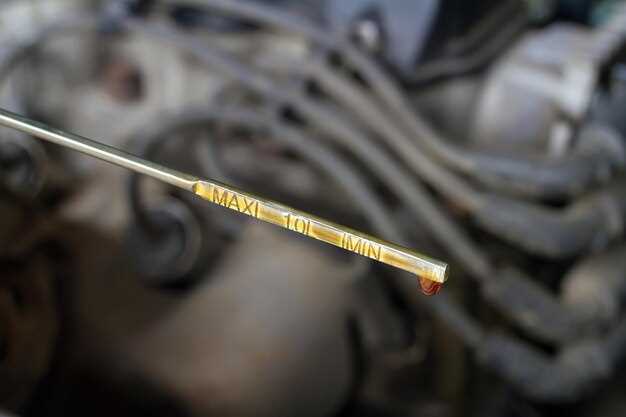
How to Detect Oil Leaks Early
- Arthur Rodriquez
- 0
- Posted on

Oil leaks in engines pose significant problems that can lead to costly repairs and environmental hazards. Detecting these leaks at an early stage is crucial for avoiding extensive damage and ensuring the longevity of the engine. Traditional methods of leak detection often involve visual inspections, but as technology advances, more innovative solutions are being developed to identify leaks before they become critical.
Various methods are currently employed to detect oil leaks early, each with its unique advantages. Techniques range from simple visual checks to advanced electronic monitoring systems that can proactively alert technicians to potential issues. Utilizing these methods not only facilitates timely maintenance but also aids in reducing the overall operational costs associated with engine maintenance.
Understanding the different approaches to leak detection allows engine operators to implement the most effective strategies tailored to their specific needs. By prioritizing early detection, it is possible to mitigate the negative impact of oil leaks, ensuring optimal engine performance and reliability.
Visual Inspection Techniques for Identifying Oil Leaks

Visual inspection is a critical method for identifying oil leaks, particularly in engines. Regular assessments help in early detection of potential problems, preventing further damage and costly repairs. Several techniques can be employed during these inspections to ensure comprehensive evaluation.
One effective technique is the use of a flashlight to inspect the engine area. Shine the light on various components, including oil pan, gaskets, and seals, to reveal any oil stains or puddles that indicate a leak. Oil tends to accumulate in specific areas, making it easier to spot with adequate lighting.
Another technique involves checking the engine’s underside for signs of oil drips. Inspecting the ground beneath the vehicle can provide insight into where the leak is originating. If you notice a dark, oily residue on the pavement, it could signal a leak in the engine or related components.
Additionally, taking note of the engine’s overall condition is essential. Look for any unusual discoloration, which may suggest an oil leak. An engine that appears excessively dirty or has a buildup of oil can reveal ongoing issues that need addressing. Maintaining a clean engine surface can also aid in identifying fresh leaks more easily.
Another useful practice is to monitor oil levels consistently. If oil levels deplete faster than expected, it indicates a problem may exist, warranting a thorough visual inspection. Pay attention to various engine components as you check levels; this can help streamline the process of locating the source of the leak.
Lastly, using a mirror can facilitate inspection in hard-to-reach areas. Mirrors can reflect light into dark spaces, making it easier to spot leaks that are not visibly accessible. This technique is particularly useful for inspecting vertical surfaces where oil may run down and accumulate.
Utilizing these visual inspection techniques allows for effective identification and management of oil leaks in engines, minimizing potential problems before they escalate.
Monitoring Tools for Early Detection of Engine Oil Problems
Effective monitoring tools are essential for identifying potential engine oil problems before they escalate into serious failures. These tools provide real-time data and analysis, enabling timely interventions that can save both money and resources.
One of the primary methods for monitoring engine oil health is through the use of oil analysis kits. These kits allow users to take samples of engine oil and send them to laboratories for comprehensive analysis. By examining the oil’s composition, including wear metals and contaminants, potential issues can be detected early.
Oil pressure gauges are another critical tool for monitoring engine oil. A sudden drop in oil pressure can indicate a leak or an insufficient oil level, signaling that immediate attention is required. Regular checks of the oil pressure can help in assessing the overall health of the engine.
Oil temperature sensors also play a vital role in monitoring engine oil problems. Overheating can lead to oil breakdown, reducing its effectiveness as a lubricant. By keeping track of oil temperature, operators can identify if the engine is running at optimal conditions or if adjustments are necessary.
Leak detection sensors are increasingly being integrated into modern engines. These sensors can detect the presence of oil in areas where it shouldn’t be, providing alerts that can prevent further damage. Technologies such as infrared cameras can also be employed to visualize oil leaks that are not immediately visible to the naked eye.
Finally, predictive maintenance software analyzes trends in engine performance data. By combining information from various sensors and monitoring tools, this software can forecast potential oil-related issues before they occur. This proactive approach helps to maintain engine longevity and efficiency.
Integrating these monitoring tools into regular maintenance routines is vital for ensuring engine reliability and preventing costly repairs related to oil problems. Early detection is key, and with the right tools, engine owners can effectively safeguard their investment.
Preventive Maintenance Practices to Minimize Oil Leak Risks

Regular oil checks are essential to identify potential leaks early. By monitoring oil levels and condition, discrepancies can be spotted before they escalate into significant issues. Frequent inspections of engine components, especially seals and gaskets, will help identify wear or damage that could lead to oil leaks.
Maintaining a clean engine environment is crucial. Accumulated dirt and debris can hinder visual inspections and delay the detection of leaks. Scheduled cleaning of the engine bay and surrounding areas helps ensure that any oil leaks are promptly noticed and addressed.
Utilizing high-quality oil and ensuring it meets the manufacturer’s specifications reduces the likelihood of leaks caused by improper lubrication. Additionally, regular oil changes prevent the deterioration of oil, which can lead to excessive engine wear and potential leak points.
Monitoring engine temperature is another critical preventive measure. Overheating engines can expand seals and increase the risk of oil leaks. Installing temperature gauges or using diagnostic tools can allow for timely interventions when unusual temperature patterns are detected.
It is also important to replace worn or damaged components proactively. Scheduling maintenance for parts known for leak susceptibility, such as oil pans, oil filters, and hoses, can significantly reduce the risk of oil leaks occurring.
Finally, educating personnel involved in maintenance about the signs of oil leaks and the importance of timely interventions ensures that potential issues are reported and handled quickly. A well-informed team is an essential part of any preventive maintenance strategy.